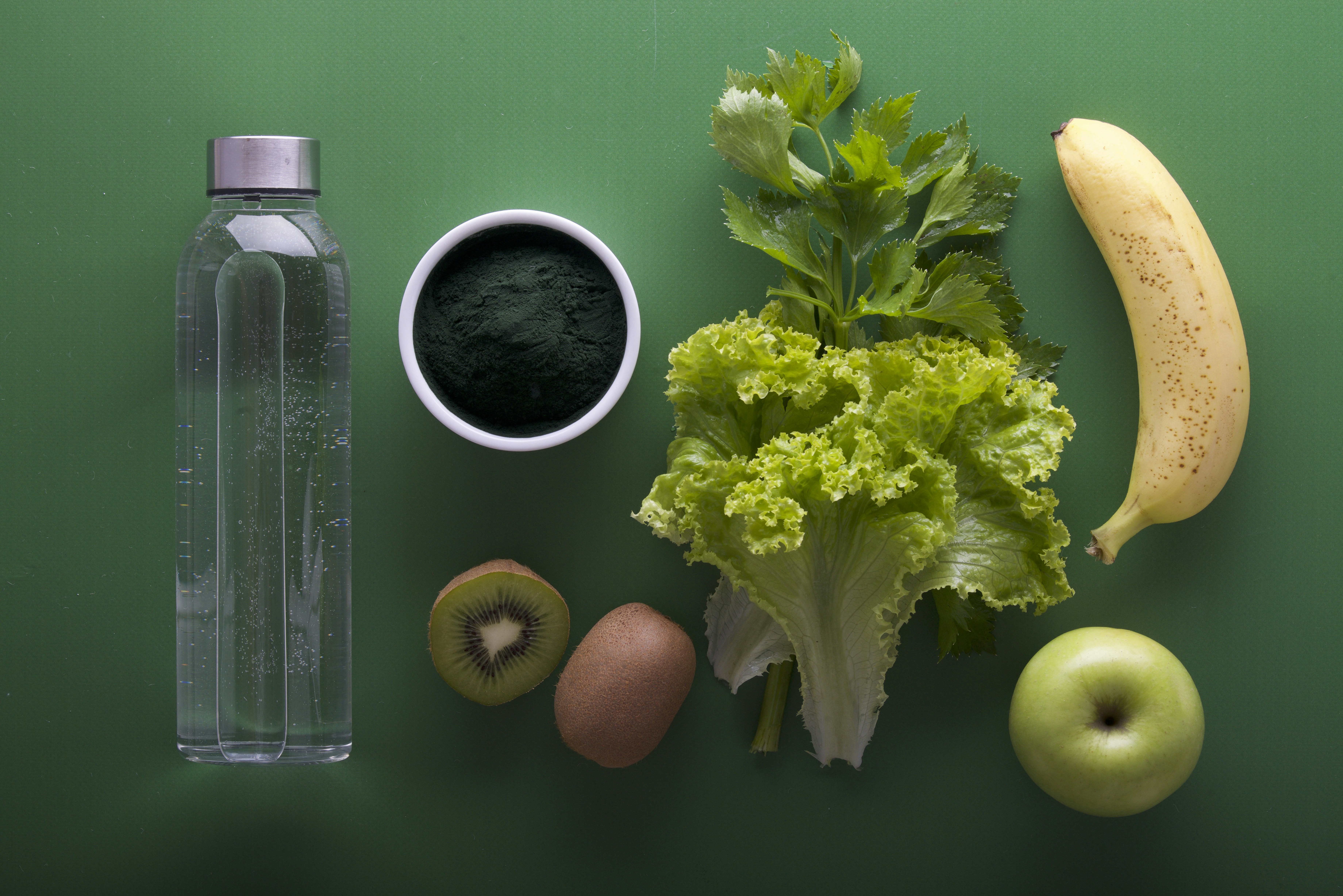- 1. Fresh Raw Veggie Salad
- 2. Quinoa & Chickpea Power Bowl
- 3. Hearty Lentil Soup
- 4. Organic Overnight Oats
- 5. Roasted Organic Vegetable Medley
- 6. Green Detox Smoothie
- 7. Hummus with Raw Veggies
- 8. Homemade Nut & Seed Bars
- 9. Berry Chia Seed Pudding
- 10. Whole Food Stir-Fry
1. Fresh Raw Veggie Salad
Vibrant Ingredients and Nutrient Power
Starting off with a simple yet incredible way to incorporate organic whole food recipes into your diet is through a fresh raw veggie salad. Using organic lettuce, cucumbers, bell peppers, carrots, and cherry tomatoes provides a nutrient-dense meal thatâs rich in vitamins, minerals, and fiber. When you choose organic vegetables, you minimize exposure to pesticides and maximize flavor and freshness, keeping your health goals on track for 2025.
Raw vegetables retain their natural enzymes and nutrients, which can be diminished during cooking. Incorporating a variety of colorful produce ensures you get a spectrum of antioxidants essential for fighting oxidative stress. Plus, raw salads are quick to prepare, making them an ideal choice for busy mornings or light lunch options.
To elevate your raw veggie salad, consider adding organic seeds like sunflower or pumpkin seeds for crunch, and drizzling with cold-pressed organic olive oil and lemon juice. These additions enhance flavors and boost healthy fat intake, supporting cardiovascular health.
Practical Tips for Preparing Raw Veggie Salads
When preparing organic whole food recipes like salads, washing produce thoroughly to remove dirt and potential residues is essential. Using a vegetable scrub brush and cold water helps keep the produce fresh and clean. Always opt for organic produce when possible to avoid pesticides and chemicals.
Chopping your vegetables uniformly not only improves presentation but also ensures even digestion and absorption of nutrients. Prepare your salads fresh or store in airtight containers for up to 24 hoursâthough eating fresh is always best to retain maximum nutrients.
For flavor variety, experiment with herbs such as basil, parsley, or cilantro. Adding a sprinkle of sea salt or a dash of balsamic vinegar can also elevate your organic whole food recipes without compromising health benefits.
2. Quinoa & Chickpea Power Bowl
Why Quinoa and Chickpeas Are Nutritional Powerhouses
This organic whole food recipe combines cooked quinoa and roasted chickpeas to create a satisfying and nutritious meal. Quinoa, a complete plant protein, provides all nine essential amino acids, making it an excellent choice for vegetarians and vegans alike. Chickpeas are rich in fiber, protein, and essential minerals like iron and magnesium, contributing to sustained energy levels.
Using organic quinoa and chickpeas ensures minimized exposure to pesticides and promotes sustainable farming practices. These ingredients are versatile, gluten-free, and can be prepared ahead of time for quick meal assembly during busy weeknights.
In 2025, plant-based diets are more popular than ever due to their health and environmental benefits, and organic whole food recipes like this bowl fit perfectly into this trend.
Building Your Organic Whole Food Power Bowl
Start by cooking your organic quinoa according to package instructions. Allow it to cool slightly before assembling the bowl. Roast organic chickpeas with smoked paprika, cumin, and a touch of sea salt for extra flavor and crunch. Layer the ingredients with fresh organic vegetables such as spinach, cucumbers, and shredded carrots.
To add healthy fats, top your bowl with slices of avocado or a drizzle of tahini. Finish with a squeeze of lemon or a splash of apple cider vinegar for acidity. This kind of meal is highly customizable and perfect for meal prep, ensuring you always have wholesome organic whole food recipes ready to go.
3. Hearty Lentil Soup
Nutritional Benefits of Organic Lentils
Organic lentil soup is a classic example of an effective organic whole food recipe thatâs both hearty and healthful. Lentils are inexpensive, rich in plant-based protein, and loaded with fiber, which supports digestive health and helps regulate blood sugar levels. Choosing organic lentils means avoiding pesticides and supporting sustainable agriculture.
Lentil soup can be seasoned with organic herbs like thyme, rosemary, and bay leaves for added flavor without added sodium or preservatives. This warm, comforting dish is perfect for cold days and can be prepared in large batches, making it ideal for 2025’s busy lifestyles.
Research shows that regular consumption of lentil-based meals can reduce cholesterol and promote heart healthâmaking them an excellent addition to your organic whole food recipes collection.
Cooking Tips for Perfect Lentil Soup
Rinse organic lentils thoroughly before cooking to remove any debris or dirt. Simmer lentils in filtered water or organic vegetable broth for about 30-40 minutes until tender. Avoid overcooking to preserve texture and nutrients.
Enhance the flavor by sautéing organic onions, garlic, and carrots in olive oil before adding the lentils and liquids. Adding a splash of apple cider vinegar at the end can brighten flavors and aid digestion.
Once cooked, blend part of the soup for a creamier consistency or leave it chunky for added texture. Serve hot with a side of organic whole grain bread for a balanced meal that emphasizes organic whole food recipes.
4. Organic Overnight Oats
Easy & Nutritious Breakfast Option
Organic overnight oats are a simple, delicious way to start your day with a nutritious organic whole food recipe. Made by soaking organic rolled oats in plant-based milk overnight, this meal retains all the nutrients and enzymes beneficial for digestion.
In 2025, people are increasingly seeking convenient, healthy breakfast options, and overnight oats fit perfectly into this trend. Customize with organic berries, nuts, seeds, or a drizzle of raw honey for added flavor and health benefits.
This dish is also excellent for meal prepping; you can prepare several jars at once to grab on busy mornings, ensuring you start your day with wholesome organic ingredients.
Building a Balanced Organic Whole Food Breakfast
Select organic oats, which are minimally processed and retain more nutrients. Combine with organic almond or plant-based milk, and add your favorite toppings such as organic blueberries, chia seeds, or shredded coconut.
For added protein, stir in a scoop of organic protein powder or a dollop of organic Greek yogurt. Keep sachets of cinnamon, ginger, or cardamom on hand for flavor variation. Enjoy a healthy, energy-boosting breakfast that feeds your body with organic whole food recipes.
5. Roasted Organic Vegetable Medley
Perfect Side Dish or Main Meal
This organic whole food recipe features a colorful medley of vegetables like zucchini, bell peppers, onions, and sweet potatoes, all roasted to perfection. Roasting enhances flavor and texture while preserving vital nutrients, especially when done with organic produce.
In 2025, roasted vegetable dishes are trending for their simplicity and health benefits. They are also versatileâcan be served as a side or added to bowls, wraps, and salads for variety and nutritional boost.
Using organic olive oil and herbs like thyme and rosemary elevates the flavor profile, turning a simple medley into a satisfying, health-promoting meal.
Tips for Perfect Organic Roasted Vegetables
Cut vegetables uniformly to ensure even cooking. Preheat your oven to at least 400°F (200°C) for optimal caramelization. Toss vegetables with organic olive oil, sea salt, and herbs before roasting for about 25-35 minutes or until tender and slightly crispy.
Resist the temptation to overcrowd the baking sheetâthis steams vegetables rather than roasts them. For extra flavor, sprinkle with organic nutritional yeast or balsamic vinegar just before serving. Incorporate roasted vegetables into your weekly meal plan as a foundation for a variety of organic whole food recipes.
6. Green Detox Smoothie
Organic Ingredients for a Healthy Detox
This vibrant green smoothie combines organic spinach, kale, apple, cucumber, and lemon juice. It’s a refreshing way to incorporate organic whole food recipes into your wellness routine while supporting detoxification and hydration.
In 2025, smoothies are a staple for health-conscious individuals looking to boost nutrient intake effortlessly. Organic ingredients ensure maximum nutrient density and purity.
Huge Discount on the Best Certified Organic Whole Food Supplement!
Adding organic chia seeds or flaxseeds increases fiber and omega-3 fatty acids, enhancing the smoothieâs health benefits. Feel free to customize with organic superfoods like spirulina or wheatgrass for an extra nutritional punch.
Tips for Making Delicious Organic Green Smoothies
Always use freshly washed organic greens and fruits, and blend until smooth for a creamy texture. Use filtered water or organic coconut water to achieve your desired consistency. Keep proportions balancedâabout 1-2 cups of greens to 1 cup of fruitsâfor optimal flavor and nutrient absorption.
Experiment with natural sweeteners like organic dates or a small amount of raw honey if needed. Consume immediately for the best nutrient retention, and incorporate this organic whole food recipe into your daily routine for sustained energy and health benefits.
7. Hummus with Raw Veggies
Rich in Plant-Based Protein and Healthy Fats
Homemade organic hummus is a fantastic organic whole food recipe that is both flavorful and nutritious. Made from organic chickpeas, tahini, lemon juice, garlic, and olive oil, it provides a hearty source of plant-based protein and healthy fats.
This dip pairs perfectly with crunchy organic raw vegetables like carrots, celery, and bell peppers, making for a satisfying snack or light meal. Choosing organic ingredients also ensures freshness and supports sustainable farming practices.
Hummus can be customized with added herbs or spices such as cumin, paprika, or fresh basil to suit your taste preferences.
Tips for Making Nutritious Organic Hummus
For a smooth, creamy texture, soak organic chickpeas overnight and cook until tender. Use a high-speed blender or food processor for best results. Add a splash of organic olive oil and lemon juice during blending for richness and flavor.
Store homemade hummus in an airtight container in the refrigerator for up to a week. Serve with organic raw vegetables, whole grain crackers, or as a spread on organic whole-wheat bread for a versatile organic whole food recipe.
8. Homemade Nut & Seed Bars
Healthy Snack on the Go
Making your own organic nut and seed bars is a fantastic way to enjoy organic whole food recipes that are both portable and nutrient-dense. Combine organic almonds, cashews, pumpkin seeds, and flaxseeds with a natural sweetener like honey or maple syrup, then press into a baking dish to set.
These bars are free from preservatives and artificial ingredients, making them a healthier alternative to commercial snack bars. Theyâre perfect for busy days, hikes, or quick energy boosts.
In 2025, consumers are increasingly seeking clean-label snack options, and homemade bars satisfy that demand with transparency and nutrition.
Tips for Perfecting Homemade Nut & Seed Bars
Toast nuts and seeds lightly before mixing to enhance flavor and crunch. Use organic bindings like honey or organic date paste to hold the bars together. Cut into individual portions and store in airtight containers for freshness.
Experiment with add-ins like dried organic berries, cacao nibs, or shredded coconut for variety. These wholesome organic whole food recipes are a great way to incorporate healthy fats and proteins into your diet naturally.
9. Berry Chia Seed Pudding
Antioxidant-Rich and Kid-Friendly
This vibrant pink organic whole food recipe combines fresh or frozen organic berries with chia seeds soaked in almond or coconut milk. Itâs a simple, nutrient-packed dessert or breakfast that offers high levels of antioxidants, omega-3s, and fiber.
In 2025, fostering healthy eating habits from a young age is emphasized, and this pudding is perfect for kids and adults alike. Using organic berries guarantees minimal pesticide residues and maximum flavor.
This make-ahead pudding allows you to enjoy a delicious and healthful organic whole food recipe even on the busiest mornings or as an easy post-workout snack.
Preparing and Serving Organic Berry Chia Pudding
Combine organic chia seeds with your choice of organic milk and stir well. Allow it to sit in the refrigerator for at least 4 hours or overnight until it thickens. Stir in organic berries before serving for added color and flavor.
You can top your pudding with additional fresh berries, nuts, or a drizzle of raw honey. For added variety, incorporate organic cacao nibs or shredded coconut. This wholesome organic whole food recipe supports digestive health and provides sustained energy throughout the day.
10. Whole Food Stir-Fry
Quick, Customizable, and Nutrient-Dense
A whole food stir-fry is an excellent example of an organic whole food recipe thatâs both fast and adaptable. Use organic vegetables like broccoli, snap peas, bell peppers, and carrots, stir-fried in organic coconut or sesame oil with garlic and ginger.
Stir-fries are an excellent way to maximize nutrient intake while minimizing cooking time and nutrient loss. Using organic ingredients ensures you avoid synthetic chemicals, supporting your health and the environment in 2025.
Serve over organic brown rice, quinoa, or cauliflower rice for a complete and satisfying meal. This method allows endless customization, making it suitable for all dietary preferences.
Tips for Making the Perfect Organic Stir-Fry
Pre-cut vegetables to ensure uniform cooking and prepare your sauce with organic tamari or coconut aminos for added flavor without soy or gluten. Cook on high heat briefly to preserve nutrients and texture.
Add fresh herbs like cilantro or basil before serving for extra freshness. This quick and nutritious organic whole food recipe is ideal for busy weeknights or as a meal prep option.
Frequently Asked Questions
Q1: What are some benefits of using organic whole food recipes?
Using organic whole food recipes reduces exposure to harmful pesticides and chemicals, enhances flavor, and supports sustainable farming. They also provide higher nutrient density, helping you maintain better health in 2025.
Q2: Can I make these recipes ahead of time?
Yes! Many organic whole food recipes like overnight oats, soups, and energy bars are perfect for meal prep. Prepare them in advance to save time and ensure you always have nutritious options available.
Q3: Are organic whole food recipes suitable for kids?
Absolutely! Many of these recipes, especially those like berry chia pudding and veggie sticks with hummus, are kid-friendly and promote healthy eating habits from an early age.
Q4: How can I incorporate more organic whole food recipes into my diet in 2025?
Start by planning meals around organic fruits, vegetables, grains, and legumes. Experiment with simple recipes such as salads, smoothies, and stir-fries that are quick to prepare. Shopping at local organic markets can also help you access fresh ingredients easily.
Conclusion
Embracing organic whole food recipes is a powerful way to improve your health, support sustainability, and enjoy delicious, nutrient-rich meals in 2025. From hearty soups to refreshing smoothies and versatile stir-fries, there are endless options to incorporate wholesome ingredients into your daily routine. By choosing organic, you’re investing in your well-being and the planet, making these organic whole food recipes an essential part of your lifestyle in the year ahead.




